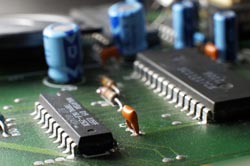More reliable lead-free electronics
According to the RoHS Directive for the "Restriction of the use of particular Hazardous Substances in electrical and electronic equipment", lead shouldn't exceed certain limits. As basic electronic products and components need to comply with these requirements, the use of lead needs to be avoided in solders and finishes. Banning of lead has also direct environmental implications for industry in terms of toxicity, recyclability and used resources. Aiming for an easy transition to lead-free soldering technologies, the EFSOT project focused on promoting reliability, efficiency and sustainability of lead-free soldering. From solder production and PWB manufacturing to re-use and recycling of electronics devices, integrated lead-free solutions were developed. These solutions may enable industries to select the most appropriate materials and processes that meet technical requirements, minimise life cycle impacts and lead to savings of resources. One of the key project results involved a novel reliability testing methodology designed particularly for lead-free solder joints. The method provides assessment of the reliability effects of various solder and finish combinations as well as different solder joint gap geometries. Unlike the conventional bulk tests, the new testing allows reliability assessments of fine pitch solder joints taking into account the ever-increasing demands for miniaturisation. In addition to this method, a model for the reliable assembly of complex and miniaturised PWBs was also built and tested. Model outcomes coupled with experimental results provided a detailed understanding of new complicated phenomena in key processes. For more information on the project, click at: http://www.efsot-europe.info



